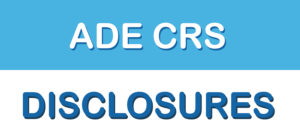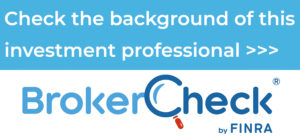RISING CREDIT CARD DEBT AND INTEREST-RATE
HIKES ARE A CALL TO ACTION
It pays to cut back on credit card spending if you can’t pay the monthly balance.
A combination of inflation and higher interest rates has compelled more people to stretch their budgets by increasing their credit card usage. In April 2023, the Consumer Finance Protection Bureau (CFPB) reported that average interest rates for credit cards had surpassed 20%, and estimated that America’s 175 million credit-card users would continue to set debt records that could hit $1 trillion. (1)
Reaching $1 trillion in credit-card debt may not seem like a huge jump from the $986 billion credit-card debt Americans reached in the fourth quarter of 2022. It’s already at an all-time high, passing the pre-pandemic high of $927 billion. (2) But $1 trillion in credit-card debt may be the landmark we need to call attention to the tendency for credit-card users to lose track of what they’re spending when they don’t see or feel the impact immediately.
Bankrate reported in April 2023 that a study by a researcher from the University of Toronto revealed that those with a history of using credit cards for payments tend to overspend more than those who pay with cash or checks. (3) A different study by the
Massachusetts Institute of Technology revealed that using credit cards to make purchases activates the brain’s rewards section. (3)
Average credit card debt across the nation reached $7,279 in 2022
In December 2022, a study of credit report data by LendingTree analysts revealed that the national average debt among credit card holders with unpaid balances was $7,279. (4) Connecticut had the highest average credit card debt ($9,408) of all the states, and Kentucky had the lowest ($5,408). (4)
Along with higher debt, credit card holders are dealing with higher interest rates. Between February 1, 2023, and May 8, 2023, the average credit card interest rate in the U.S. increased from 20.92% to 24.26%, according to Forbes Advisor’s weekly credit card report. (5) At February’s 20.92% rate, it would take 17 months of $500-a-month payments to pay off the average credit card debt of $7,279, and interest payments would total $1,040. At May’s 24.26% rate, it would take 18 months of $500 payments to pay off $7,279, with interest payments totaling $1,246. (6)
Getting out of credit card debt
If you don’t pay off your credit card balance every month, your debt can quickly grow—and your credit score can drop. If you’re struggling with credit card debt, follow these steps:
Don’t ignore your debt. Review each card’s balance and interest rate, and sit down and calculate your total debt.
Avoid adding to your debt. Use your credit cards for essential expenses only.
Pay off as much as you can each month. You may want to focus on high-interest debts first, while making the minimum payments on other accounts.
Consider getting a balance transfer credit card. These cards don’t charge interest on debt you transfer from other cards for a set number of months—usually well over a year. Transferring debt from a credit card with a 23% annual percentage rate (APR) to a card offering 0% APR for 21 months can help you to erase your debt—or at least get it under control. However, there is generally a balance transfer fee—usually 3% to 5% of the total transferred (7)—which is likely much less than the interest rates charged by your credit card companies.
While credit cards come with benefits, they also come with risks. Keeping track of your purchases and paying off your balances each month can give you peace of mind—and a higher credit score. Both of those bring great rewards.
Thanks for checking out the blog.
Joe Breslin , CFP®
Sources
(3) Bankrate: Do you spend more with a credit card?
(4) LendingTree: 2023 Credit Card Debt Statistics, April 21, 2023
(5) Forbes Advisor: What is the Average Credit Card Interest Rate This Week? May 8, 2023
(6) Discover.com: Credit Card Interest Calculator
(7) NerdWallet: What Is a Balance Transfer, and Should I Do One? May 8, 2023
This material is for general information only and is not intended to provide specific advice or recommendations for any individual. There is no assurance that the views or strategies discussed are suitable for all investors or will yield positive outcomes. Investing involves risks including possible loss of principal.
This material was prepared by LPL Financial. Securities and advisory services offered through LPL Financial (LPL), a registered investment advisor and broker-dealer (member FINRA/SIPC).
Insurance products are offered through LPL or its licensed affiliates. To the extent you are receiving investment advice from a separately registered independent investment advisor that is not an LPL Financial affiliate, please note LPL Financial makes no representation with respect to such entity.
Securities and insurance offered through LPL or its affiliates are: 









